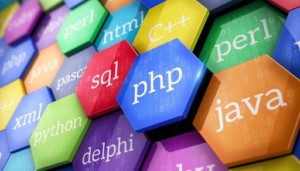We Need to Develop Expert Screen Readers
By Dorothy Mikuska, former high school English teacher and owner of PaperToolsPro

Isn’t it odd that the Common Core State Standards (CCSS) for reading does not introduce electronic reading until fifth grade? Since children increasingly read from screens on computers, eReaders like iPods or Kindles, and smartphones, shouldn’t they learn to read from day one on the very media they have comfortably used since they were toddlers?
CCSS may be telling us something important about the false assumptions we are making about reading—that a word is not read the same regardless of where it appears: a clay tablet, a scroll, a paper book, or a screen.
When A Word Is Not A Word
Research has shown that the same words we read from a paper source illicit different physical and cognitive processes than from a screen.
Our eyes move differently reading on paper than on screens. Tracking eye movements, Jakob Nielson found paper readers follow an E pattern: eyes move across the entire first line and each subsequent line of text to the bottom of the page. Screen readers follow an F pattern: eyes read the first line, a portion of the next line and rapidly scroll to the bottom of the page.
As a result, Nielson found that words and sentences are processed out of sequence for 84 percent of screen readers, who ultimately read only 18 percent of the text. Fragmented reading like this curtails understanding of the text, synthesizing information, and connecting to what the reader already knows—activities at the very heart of engaged learning.
As textbooks and libraries become digital and as reading articles from Science and books like Tony Morrison’s Beloved happen on a smartphone screen, fast and scattered reading can hinder comprehension and reading to learn.
Different Brain Functions
Brain researcher Maryanne Wolf in Proust and the Squid tells us that the brain both reads and thinks differently depending on the medium. Paper reading stimulates deep white brain cells of long-term memory and feelings; electronic reading over-stimulates surface grey brain cells where decoding words and fast skimming take place. In the milliseconds that the brain should access long-term memory for learning to occur, the brains of screen readers instead direct attention to decoding or skimming information superficially.
Unfortunately, the neural structure of the brain changes permanently after the first five hours of screen reading experience to prefer skimming and decoding rather than reading deeply. Those five hours may include the composite time an infant or a child is engaged in an app on any screen including a smartphone or iPad.
Motivated Electronic Readers
Whether it is the novelty, convenience, ease, or accessibility of electronic devices, students are usually more motivated to read from screens rather than from paper. Motivation to read from any media should be encouraged, but electronic sources provide opportunities students find particularly useful. Online or built-in dictionaries enhance vocabulary development and comprehension. Instant access to search background information with in-text or Internet links enriches understanding the text. Readers can change the size and color of the font, especially helpful for those with learning or visual disabilities. Saved images and text can be organized into folders to access and manipulate later as personal databases of knowledge.
Students embrace these advantages of electronic reading as valuable aids in their learning.
Becoming Expert Multi-Textual Readers
However, readers, both novice and expert, must understand the strengths of each medium and learn to read well from both.
To prevent fragmented, non-sequential reading of any text, students must learn to: read slowly; break down the text into small pieces; put information in their own words, sentences, and voice in the form of notes; connect with other information they know just as they would use keywords in searches; create a concept map of information known, learned, and still needed; synthesize information into transformed knowledge.
Since paper reading skills prepare readers best for both media, students should master them and apply them to screen reading. Since the skills for screen and paper reading should be the same, readers merely need to train their eyes and brains to read from both with the same expertise.
And so the CCSS introduces screen reading at fifth grade after students have mastered reading deliberately on paper and can apply those skills to reading electronic sources.
Regardless of the source, we want students to make sense of what they read, to learn, reflect, grow, and experience the joy, the serendipity of life-long reading regardless where those words appear.
Photo Courtesy of BigStock.





gpouliot
Common Core has the ability for assessment to lead instead of follow. This would dramatically change how students are educated in this country and prepared for 21st century jobs.